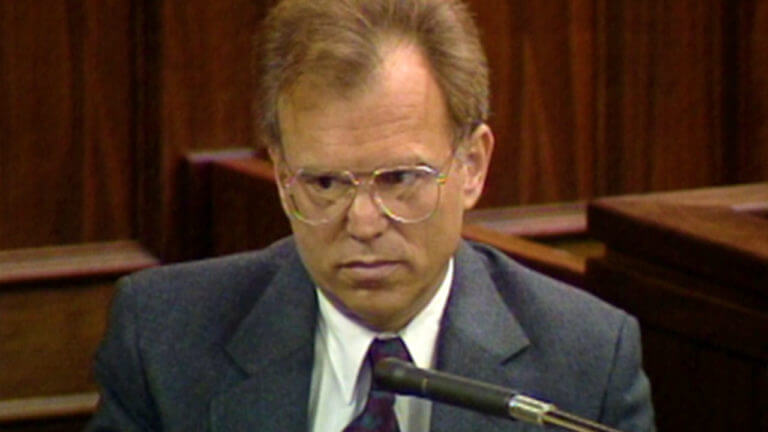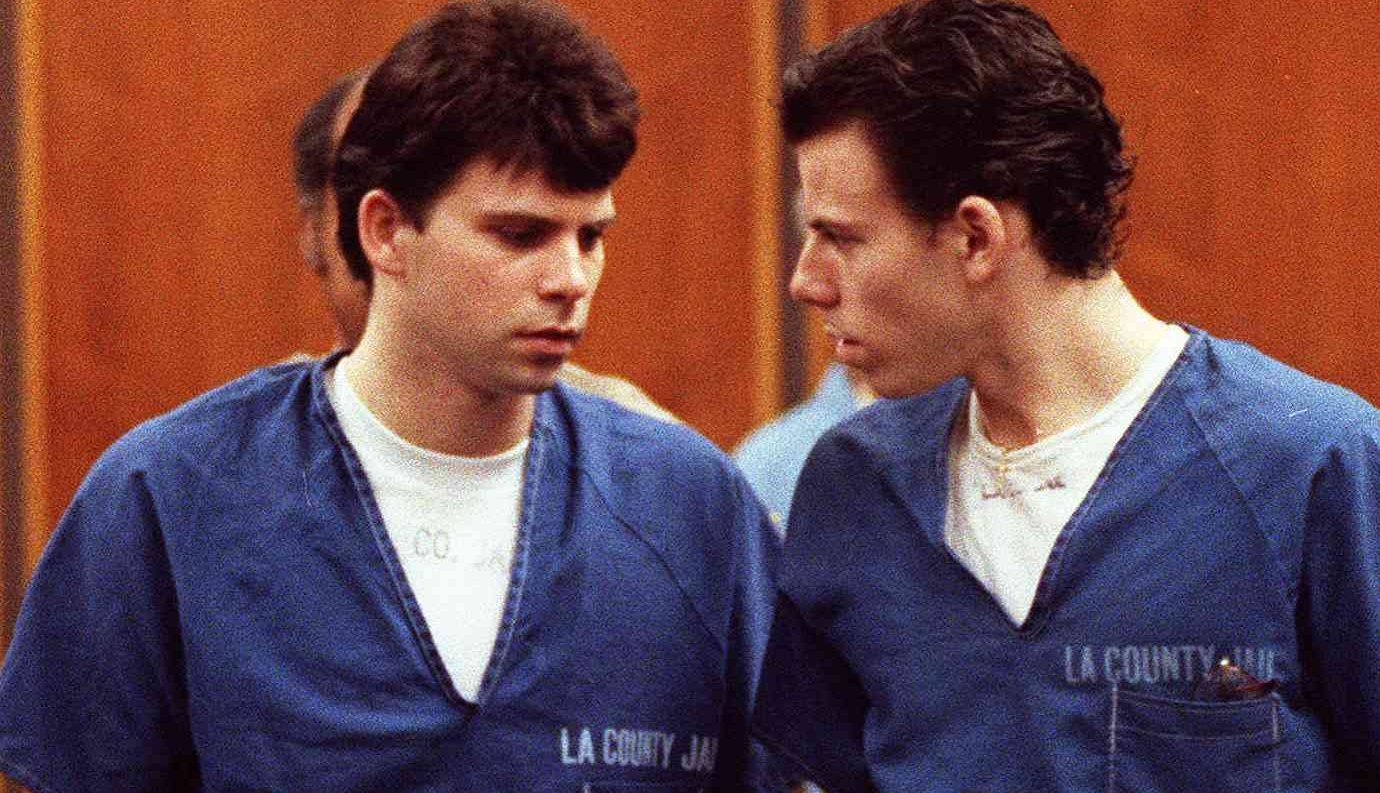The Man Behind the Confession: What Happened to Dr. Jerome Oziel, the Menendez Brothers’ Therapist?
In the annals of American crime, few cases have captivated the public as deeply as the Menendez murders. Lyle and Erik Menendez’s brutal killing of their parents, Jose and Kitty Menendez, shocked the nation and turned into one of the most highly publicized criminal trials of the early 1990s. Now, with Netflix’s latest release, Monsters: The Lyle and Erik Menendez Story, the chilling details of this family tragedy are once again under scrutiny. Beyond the brothers and their victims, there was another key figure who played a dramatic role in shaping the Menendez narrative: Dr. Jerome Oziel, Erik’s therapist. Oziel’s presence in the case, from the confessions to the courtroom, remains an essential—if controversial—part of this story. Here’s a closer look at Oziel’s relationship with the Menendez brothers, his impact on the case, and what has become of him today.

Jerome Oziel
The Confession: Did Erik Menendez Admit the Murder to Oziel?
Dr. Jerome Oziel’s association with the Menendez brothers began in 1988, when the family turned to him after Lyle and Erik were caught burglarizing homes in Calabasas, California. Jose and Kitty Menendez sought help for their troubled sons, hoping Oziel could address what they viewed as signs of delinquency. For a time, Erik saw Oziel as his therapist, confiding in him. But the relationship took a dark and pivotal turn after the murder of the Menendez parents in August 1989.
On Halloween of that year, Erik, who was clearly struggling with the weight of his actions, reached out to Oziel with an urgent request for a session. According to court records, they met at Oziel’s Bedford Drive office in Beverly Hills. The session extended beyond the confines of the office, spilling into the surrounding streets as they took a walk in a nearby park. There, Erik confessed to the murders, describing the planning, the execution, and the fabricated alibi he and his brother had constructed.
Oziel documented the confession meticulously, detailing how Erik recounted the crime and the reasons behind it. In dictated notes from this session, Oziel later described how Erik had revealed “in detail the planning and execution of the crime, including (the brothers’) fabricated alibi defense.” This confession would become central to the case against the brothers. Not long after, on November 2, both Lyle and Erik met with Oziel to discuss the motive behind the murder of their parents, diving into the psychological and emotional factors that led them to such a horrific act.
One critical decision Oziel made was to record a December 11 session with the brothers, creating an audio record of their discussions. This tape would prove both invaluable and controversial, and it became the subject of a prolonged legal dispute over its admissibility in court. Oziel’s recordings and notes would play a decisive role in the brothers’ prosecution, as well as in the public’s understanding of the gruesome crime.
The Tapes: How Oziel’s Recordings Influenced the Case
The recordings Oziel made of the Menendez brothers’ confessions became a flashpoint in the legal proceedings. In March 1990, a dramatic turn of events took place when Judalon Smyth, a former patient of Oziel and a woman with whom he was having an affair, approached the authorities and disclosed the existence of these tapes. This bombshell revelation led to the tapes being seized by law enforcement, and shortly thereafter, the Menendez brothers were arrested.
The legal battle that followed centered on whether the recordings were admissible in court, with the defense arguing that they were protected under therapist-patient confidentiality. The question reached the California Supreme Court, which ultimately ruled in August 1992 that two out of four tapes were indeed admissible. This decision was instrumental in the trial, providing evidence that supported the prosecution’s case and giving insight into the brothers’ motives and mindset at the time of the killings.
Oziel’s role in the trial was complicated and contentious. During the first trial, he testified as a key witness for the prosecution, describing Erik’s confession in vivid detail. However, Oziel’s credibility was subjected to a grueling cross-examination that focused largely on his personal life, including his affair with Smyth. This affair cast a shadow over his testimony, with the defense attempting to depict him as an unreliable and compromised witness whose own conduct undermined his professional ethics.
Related: 11 Things You Should Know About Leslie Abramson, the Menendez Brothers' Attorney
By the time of the second trial, Oziel’s direct involvement had waned—he did not testify. However, the tape recordings he had made were still played in court, cementing his influence in the case even in his absence. The recordings, along with the complex web of personal and professional conflicts that surrounded Oziel, left an indelible mark on the Menendez case, turning him into one of its most controversial figures.
Life After the Trial: Oziel’s Fall from Grace and New Beginnings
The fallout from the Menendez trial took a heavy toll on Dr. Oziel’s professional life. In 1997, the California Board of Psychology moved to revoke his license, citing several ethical violations, including breaches of patient confidentiality and allegations of inappropriate relationships with female patients. Oziel denied the accusations, maintaining that the revocation of his license was not related to any wrongdoing. In a statement given in 2017, he claimed, “I did not surrender my license due to the accusation, which implies I gave up my practice because I did things alleged in the original accusation. … No agency ever found I did a thing that was improper or wrong.”
Oziel suggested that his decision to step away from clinical psychology was motivated by a new career opportunity. He relocated to another state and focused on a business venture that he described as “highly lucrative,” eventually leaving behind the world of therapy in which he had once thrived. This shift marked a significant departure from his earlier life in Beverly Hills, where he had been a recognized figure in psychological circles, specializing in phobias and sex-related disorders, and had even taught at the University of Southern California.
Today, Oziel resides in Albuquerque, New Mexico, where he has reinvented himself as a marital mediator, going by the name Jerry Oziel. He now works at the Marital Mediation Center, where he applies his expertise in psychology to help couples resolve conflicts in their marriages without resorting to divorce. The center’s mission focuses on conflict resolution as an alternative to separation, offering couples a chance to repair their relationships through structured dialogue and mediation.
Despite his changed life and new career path, the shadow of the Menendez case continues to follow Oziel. The Netflix documentary on the Menendez brothers, released in October 2024, revisits his role in the case. Although he declined to participate in the documentary, his impact on the story remains undeniable. His involvement as the therapist who first heard Erik Menendez’s confession transformed him into a central—and polarizing—figure in the Menendez saga.
Where Is Dr. Jerome Oziel Now?
Though Dr. Jerome Oziel no longer holds a license to practice psychology, he has continued to leverage his background in human behavior. Now known as Jerry Oziel, he has focused on helping couples navigate marital issues. In Albuquerque, he lives a quieter life, removed from the high-profile cases that defined his earlier career.
Oziel’s academic journey began at Arizona State University, where he received his doctorate in clinical psychology in 1972. Following stints in South Carolina and eventually California, he established himself as a psychologist in Beverly Hills, becoming known for his work on phobias and sex-related disorders. His career was on a successful trajectory until the Menendez case thrust him into a maelstrom of media attention, ethical scrutiny, and ultimately, professional ruin.
The Menendez case remains one of the most haunting and complex trials in American criminal history, and Oziel’s role in it has ensured that his name remains intertwined with the story. As new audiences revisit the case, Oziel's contributions—and controversies—continue to provoke questions about the limits of confidentiality, the ethics of therapy, and the personal toll of high-profile legal battles. In this way, Dr. Jerome Oziel remains a specter in the saga of the Menendez family, his influence etched into the legacy of a case that has gripped the American public for decades.










